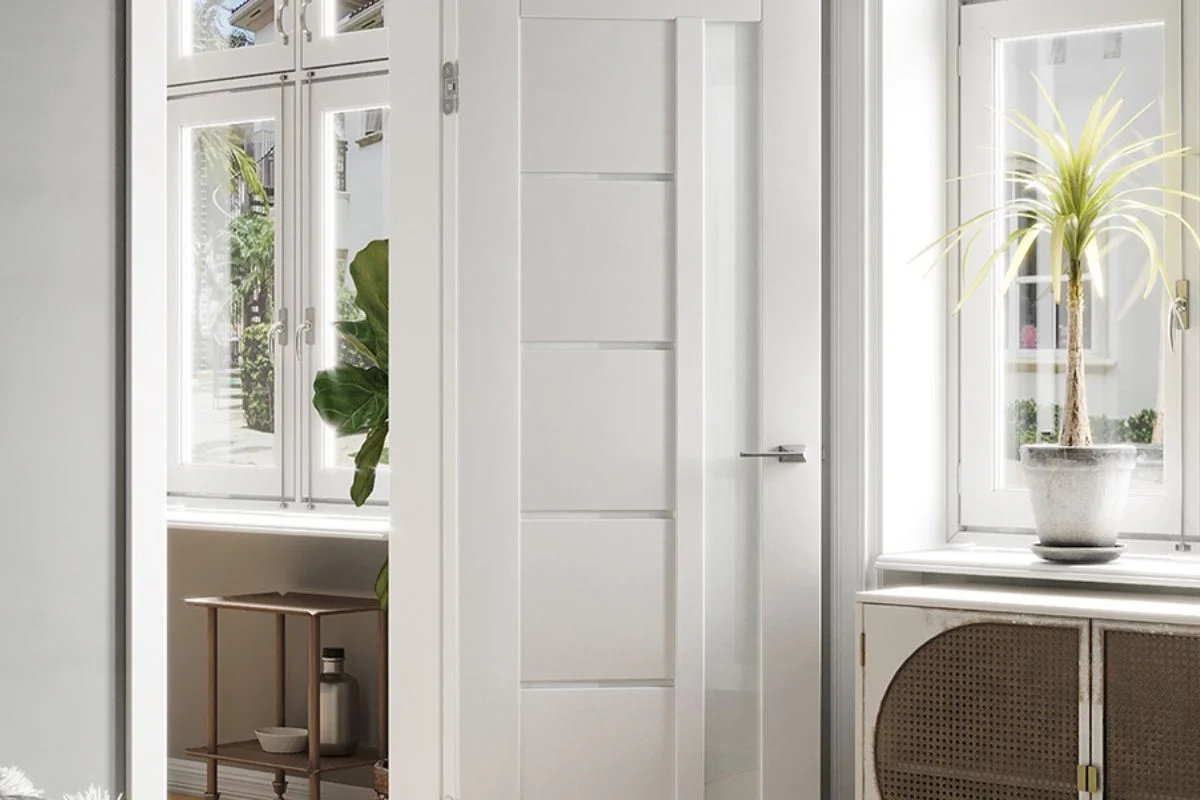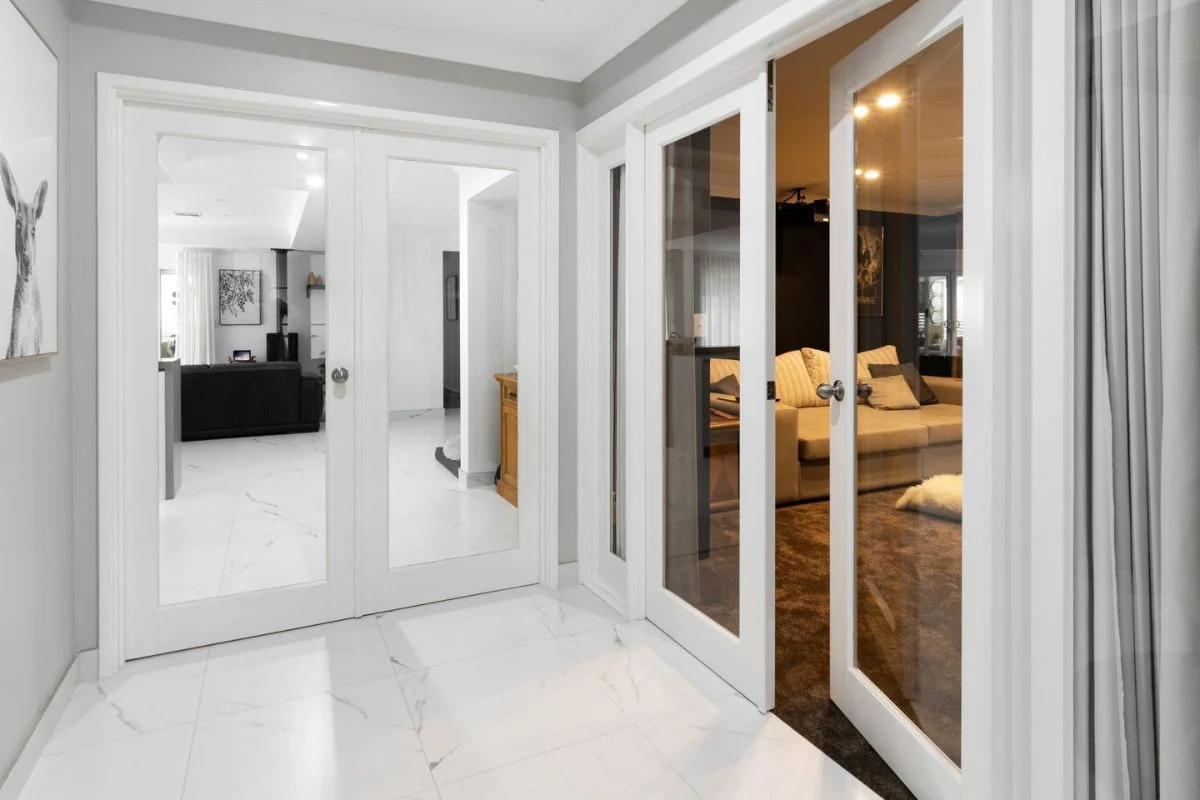
Interior doors are not merely functional elements within a home; they are essential components that contribute to the overall aesthetics, functionality, and flow of interior spaces. From defining room boundaries to enhancing privacy and sound insulation, interior doors serve various purposes while also making significant design statements.
In this article, we will delve into the world of interior doors, exploring practical considerations and offering insightful design ideas for every room in your home. Whether you’re renovating an existing space or designing a new one, understanding the importance of interior doors and how to choose the right ones can elevate the ambiance and functionality of your living spaces.
Join us as we uncover the essential aspects of interior doors, from material choices and styles to installation techniques and design trends. Discover how thoughtful selection and placement of interior doors can transform your home into a harmonious and inviting sanctuary tailored to your lifestyle and preferences.
Importance of Interior Doors in Home Design
Interior doors play a crucial role in the overall design and functionality of homes, serving both practical and aesthetic purposes. Here are several key reasons why interior doors are essential elements of home design:
Room Division and Privacy: Interior doors provide delineation between different areas of the home, creating separate zones for various activities such as sleeping, working, and socializing. They offer privacy by effectively separating private spaces like bedrooms and bathrooms from public areas.
Sound Insulation: Well-installed interior doors help minimize noise transmission between rooms, allowing occupants to enjoy peace and quiet in their respective spaces. This is particularly important in homes with multiple occupants or where activities in one room may disturb others.
Temperature Control: Interior doors contribute to temperature control by containing heated or cooled air within specific areas of the home. This helps maintain comfortable indoor temperatures while reducing energy consumption and utility costs.
Enhanced Security: Interior doors add an extra layer of security by providing barriers against unauthorized access to certain areas of the home. They can be equipped with locks or latches to safeguard valuable belongings and ensure the safety of occupants.
Aesthetic Appeal: Interior doors contribute to the overall aesthetics of home interiors, enhancing the visual appeal of rooms and complementing the design style and decor scheme. They come in a variety of styles, materials, and finishes, allowing homeowners to express their personal taste and style preferences.
Architectural Character: Interior doors can serve as architectural focal points, adding character and charm to home interiors. They come in various designs, including panel doors, French doors, barn doors, and more, each offering unique architectural features that contribute to the overall ambiance of the space.
Improved Functionality: Properly chosen and installed interior doors improve the functionality of living spaces by facilitating easy movement between rooms and optimizing floor plans for efficient use of space. Sliding doors, pocket doors, and bi-fold doors, for example, are excellent space-saving solutions in smaller homes or rooms with limited clearance.
Types of Interior Doors
Interior doors come in a variety of types, each offering unique features and benefits to suit different design preferences and functional requirements. Here are some common types of interior doors:
Hinged Doors: Hinged doors, also known as swing doors, are the most traditional and commonly used type of interior door. They are attached to the door frame by hinges on one side and swing open and closed along a single axis. Hinged doors are available in various styles, including panel doors, flush doors, and raised panel doors.
Sliding Doors: Sliding doors operate by gliding along a track instead of swinging open like hinged doors. They are ideal for spaces with limited clearance or where traditional swing doors may be impractical. Sliding doors are popular for closets, pantries, and room dividers, and they come in a range of materials such as wood, glass, and metal.
French Doors: French doors feature multiple glass panels set within a frame and hinged to swing open from the center. They add elegance and sophistication to interiors while allowing natural light to flow between rooms. French doors are commonly used for entrances to patios, balconies, and interior spaces like home offices or dining rooms.
Bi-fold Doors: Bi-fold doors consist of two or more panels that fold accordion-style when opened. They are space-saving alternatives to traditional hinged doors and are often used for closets, laundry rooms, and utility spaces. Bi-fold doors are available in various materials and configurations, including wood, composite, and glass.
Pocket Doors: Pocket doors slide into a recessed pocket within the wall when opened, effectively disappearing from view and maximizing usable space. They are ideal for areas where floor space is limited or where a seamless transition between rooms is desired. Pocket doors are commonly used for bathrooms, bedrooms, and home offices.
Barn Doors: Barn doors are rustic-style sliding doors that hang from a track mounted above the doorway. They offer a charming and farmhouse-inspired aesthetic and are often used as statement pieces in modern interiors. Barn doors are suitable for spaces where traditional swinging doors may not fit or where a touch of rustic charm is desired.
Materials Used in Interior Doors
Interior doors are constructed from various materials, each offering distinct characteristics in terms of durability, aesthetics, and performance. Here are some common materials used in the manufacture of interior doors:
Wood: Wood is a classic and timeless choice for interior doors, prized for its natural beauty, warmth, and versatility. Doors made from solid wood or engineered wood (such as MDF or HDF) offer excellent durability and can be stained, painted, or finished to enhance their appearance. Wood doors come in a variety of species, including oak, pine, mahogany, and maple, each with its own unique grain pattern and color variations.
Glass: Glass interior doors add elegance, sophistication, and lightness to interior spaces. They are often used to maximize natural light flow between rooms or to create visual interest and transparency. Glass doors can be clear, frosted, or textured, offering varying levels of privacy and style options. They are commonly found in modern and contemporary design schemes, particularly in areas like home offices, living rooms, and dining areas.
Metal: Metal interior doors, typically made from steel or aluminum, offer strength, durability, and sleek modern aesthetics. They are highly resistant to warping, cracking, and rotting, making them ideal for high-traffic areas and commercial settings. Metal doors can be painted or powder-coated in a variety of colors and finishes to match any interior decor style.
Composite Materials: Composite interior doors are engineered from a combination of materials such as wood fibers, resins, and polymers. They offer the look and feel of natural wood doors with added durability, stability, and resistance to moisture and humidity. Composite doors are available in a range of styles and finishes and are often more affordable than solid wood doors.
Fiberglass: Fiberglass interior doors are known for their strength, durability, and low maintenance requirements. They are resistant to dents, scratches, and moisture, making them ideal for high-humidity environments like bathrooms and laundry rooms. Fiberglass doors can mimic the look of wood grain or be painted in a variety of colors to match any interior decor scheme.
Vinyl: Vinyl interior doors are lightweight, affordable, and easy to maintain. They are resistant to moisture, scratches, and dents, making them suitable for busy households and commercial settings. Vinyl doors come in a variety of styles and colors and offer excellent energy efficiency and noise reduction properties.
Popular Interior Door Styles and Designs
Interior doors come in a wide array of styles and designs, each contributing to the overall aesthetic and ambiance of a space. Here are some popular interior door styles and designs that add character and charm to home interiors:
Panel Doors: Panel doors feature raised or recessed panels on one or both sides, adding texture and visual interest to the door surface. They come in various configurations, including 2-panel, 3-panel, 4-panel, and 6-panel designs, with each panel contributing to the door’s architectural style and character. Panel doors are versatile and complement a range of interior design themes, from traditional to transitional and contemporary.
Flush Doors: Flush doors have a flat, smooth surface without any raised or recessed panels, creating a sleek and minimalist look. They are ideal for modern and contemporary interiors, where clean lines and simplicity are emphasized. Flush doors can be made from a variety of materials, including wood, MDF, and composite materials, and are available in different finishes and textures to suit various design preferences.
Barn Doors: Barn doors are rustic-style sliding doors that hang from a track mounted above the doorway. They add a touch of farmhouse charm and warmth to interiors while offering space-saving functionality. Barn doors are characterized by their large panels and distinctive hardware, such as wrought iron or black steel, which accentuates their rustic appeal. They are commonly used as room dividers, closet doors, and statement pieces in modern farmhouse and eclectic design schemes.
French Doors: French doors feature multiple glass panels set within a frame and hinged to swing open from the center. They add elegance and sophistication to interiors while allowing natural light to flow between rooms. French doors are versatile and can be used as entrances to patios, balconies, and interior spaces like home offices, dining rooms, and libraries. They come in various configurations, including full-light, half-light, and quarter-light designs, offering flexibility in design and functionality.
Pocket Doors: Pocket doors slide into a recessed pocket within the wall when opened, effectively disappearing from view and maximizing usable space. They are ideal for areas where floor space is limited or where a seamless transition between rooms is desired. Pocket doors are available in various styles and materials, including wood, glass, and composite, and can be customized to match the overall design aesthetic of the space.
Glass Panel Doors: Glass panel doors feature one or more panels of glass set within a frame, adding transparency and lightness to interiors. They are ideal for rooms where natural light is limited or where visual connectivity between spaces is desired. Glass panel doors come in various styles, including clear, frosted, etched, and stained glass, allowing homeowners to customize the level of privacy and style to suit their preferences.
Maintaining and Caring for Interior Doors
Proper maintenance and care for interior doors are essential to preserve their appearance, functionality, and longevity. Here are some tips for maintaining and caring for interior doors:
Regular Cleaning: Dust and dirt can accumulate on the surface of interior doors over time, diminishing their appearance. To keep doors looking their best, regularly dust them with a soft cloth or microfiber duster. For stubborn stains or dirt buildup, use a mild solution of water and gentle soap to clean the surface, and avoid abrasive cleaners that may damage the finish.
Protecting Wood Doors: If your interior doors are made of wood, it’s important to protect them from moisture and humidity, which can cause warping, swelling, and rotting. Use a wood conditioner or polish to nourish and protect the wood surface, and avoid placing wet or damp items near wooden doors. Additionally, consider applying a sealant or protective finish to minimize moisture penetration and maintain the door’s integrity.
Checking Hardware: Periodically inspect the hardware on your interior doors, including hinges, handles, and locks, to ensure they are functioning properly. Tighten loose screws or bolts, lubricate hinges with a silicone-based lubricant to prevent squeaking or sticking, and replace any damaged or worn-out hardware as needed. Properly functioning hardware contributes to the smooth operation and security of interior doors.
Repairing Damage: Address any scratches, dents, or chips on interior doors promptly to prevent further damage and deterioration. For minor surface imperfections, use wood filler or putty to fill in the damaged area, sand it smooth, and touch up the finish with paint or stain to blend it with the surrounding surface. For more extensive damage, consider consulting a professional door repair service to assess and repair the door properly.
Preventing Swelling and Shrinkage: Wood doors are prone to swelling and shrinking in response to fluctuations in temperature and humidity levels. To minimize the risk of warping or misalignment, maintain consistent indoor climate control, and use a dehumidifier in humid environments to regulate moisture levels. Avoid exposing wood doors to direct sunlight or extreme heat, as this can cause fading and damage to the finish.
Regular Inspection: Periodically inspect interior doors for signs of wear, damage, or malfunction. Check for cracks, peeling paint, loose joints, or other issues that may compromise the door’s integrity or functionality. Addressing minor problems early can prevent them from escalating into more significant issues that require costly repairs or replacements.
Conclusion
In conclusion, interior doors are essential elements of home design, providing privacy, division of space, and architectural character to living spaces. From traditional panel doors to modern glass and sliding doors, the variety of styles and designs available allows homeowners to personalize their interiors according to their taste and lifestyle.


